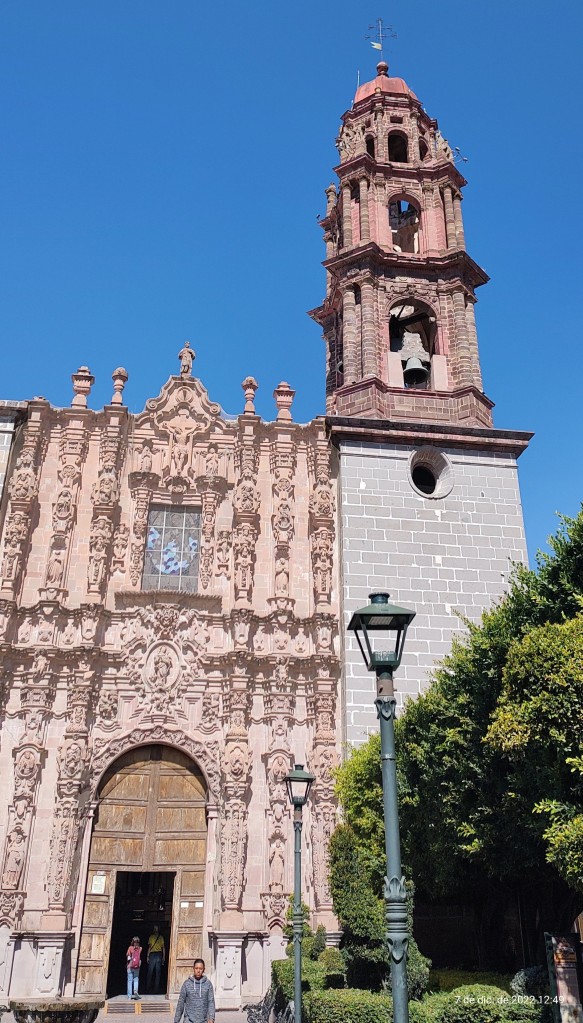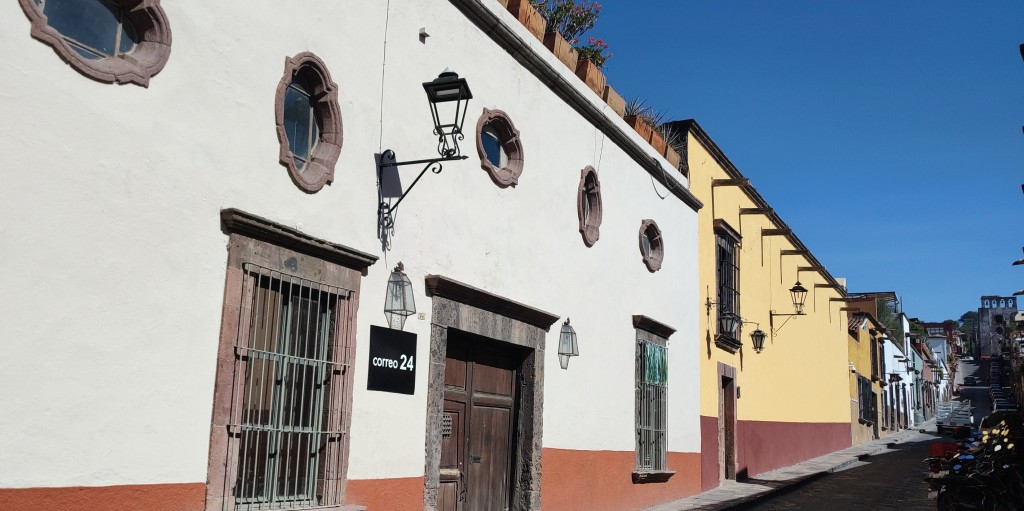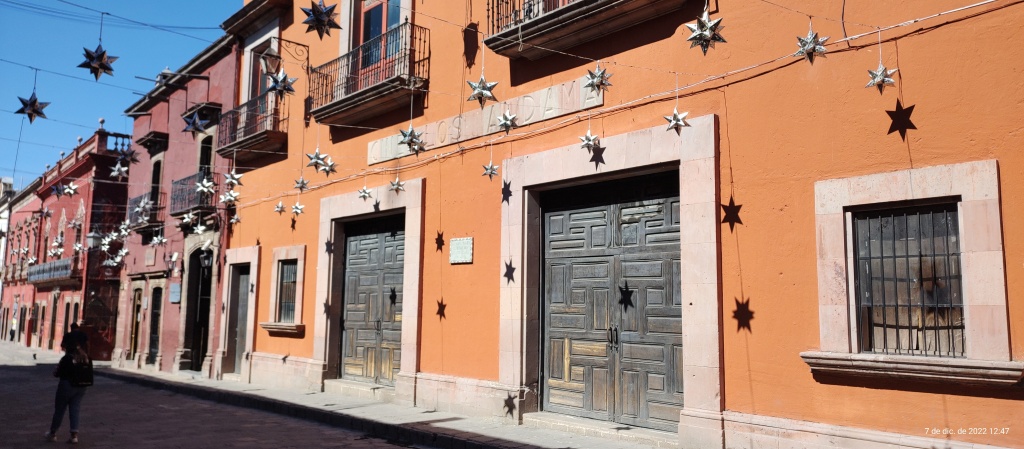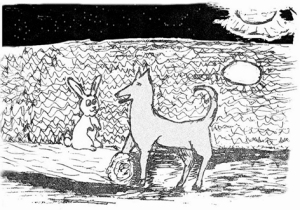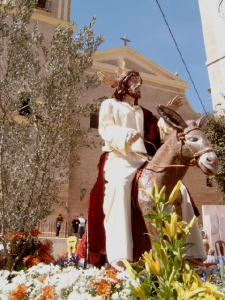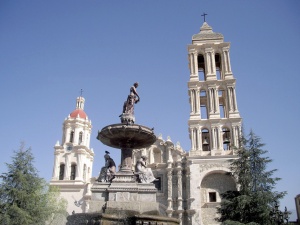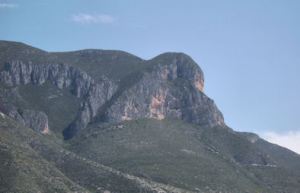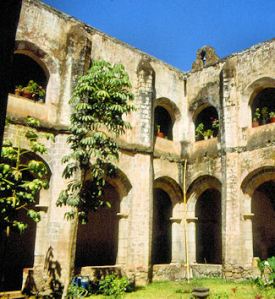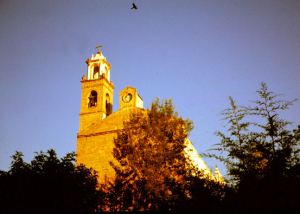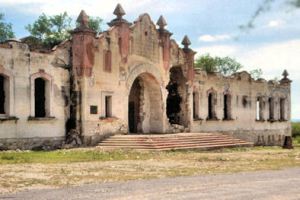Saint Francis’s Church in San Miguel de Allende was struck by lightning
Although this section deals with an event which occurred in a place other than the house at 23, San Francisco Street, it is included because, in a certain way, it is related to a person who had lived in that house and to people who were in the house when, on Thursday the 29th of July, 1943, at 4:25 pm on a bright, cloudless afternoon, according to the chronicles, a streak of lightning struck the belfry of the Temple of Saint Francis.
₰₰₰₰₰₰₰
I think it was in 1943 when Saint Francis’s Church was struck by lightning. The lightning (and someone stole the photo I used to have, a historical photo which showed that it was exactly 4.25 in the afternoon when the lightning struck) knocked down part of the bell tower of Saint Francis’s Church. Down below, a team of workmen had been working on a drain and the great stones fell on two of the men and killed them outright. My uncle, Agustin Sautto, was standing in front of the church, leaning on a lamp post that was like the rails from a railway track, and that is where the lightning touched earth, and my uncle was hurled into the middle of the street. My grandfather was at his desk at home and he saw him flying up and landing in the middle of the street. My grandfather went running out and said: “What has happened, Agustin, whatever has happened?” And my uncle said: “Nothing, Dad, I just had a bit of a fright, that’s all.” How could he say that nothing had happened to him, if about nine months later he passed away. He lost consciousness, he got Stokes-Adams syndrome, which causes a paroxysmal shift in the normal rhythm of the heart. He went to Mexico City several times to see cardiac specialists, but as no treatments existed, he died a few months later here in San Miguel.
Luis Miguel Villarreal
Agustin Sautto died a few days after he was struck by lightning outside Saint Francis’s Church. He was very badly affected and died a few days later.
Graciela Cruz
Agustin Sautto was the richest man in San Miguel, I believe. He was the son of a certain Mrs. Vazquez, who was the owner of the house about which we are talking.
Jose Ignacio Reyes Retana
I was born in ‘42, so I was very little when lightning struck and knocked down part of the bell tower of Saint Francis’s Church. My mum used to have a stand outside the temple and I was with her. On one side of us, was one of my mother’s comadres, at her own stand. Although there was not a cloud in the sky that afternoon, suddenly we heard a loud crack of thunder and we saw how the lightning struck the tower and knocked down several bits of stone. Without knowing what was happening, my mum, when she heard the thunderclap, she pressed herself against the wall and I ran after her, I wanted to get inside the church, but it was closed at that hour. The pieces of stone could have killed us because they fell almost on top of my mother’s stand. Nothing but dust fell on her comadre´s stand, which was about five metres away. We heard that the lightning killed just one person, almost immediately. At that time, the ambulance station was in Nuñez Street, but there were no ambulances there at the time, so the stretcher bearers came running on foot to pick up the person who was lying there in the middle of the street. I don’t remember very well exactly what happened because I was a very little girl when it all happened, but it seems that the lightning struck this man who was standing outside the house where the primary school used to be and the impact threw him a long way and he landed in the middle of the road, or something like that. I don’t know who the gentleman was that died and I hope he is resting in peace.
Soledad Gonzalez
My Auntie Lupe, the Cristera, used to tell us about the time when the bell tower of Saint Francis’s Church was struck by lightning. She was in the garden with some other people and the clapper of the bell fell right into her skirt! She used to wear those long skirts and the clapper of the bell fell right there. If it had hit her or anyone else directly, it would have killed them.
Maruja Gonzalez
My brother Juan used to talk about that lightning business, because he had a job as a clerk in the Revenues Office and an aunt of ours had a job as a cleaner in the same mansion. He used to say that it was in the afternoon, that he was there on the balcony of the place with some other people and that our auntie was sweeping outside in the street. There was a very frightening thunderclap and they saw how part of the tower of the church fell down in front of them. I don’t remember if he ever told us about whether anyone had died, but he did say that our auntie ran out into the middle of the road to help because the lightning had struck a man who was lying there stretched out almost in front of the Revenues Office. Then my brother, Juan, and his workmates ran down to help, too.
Salvador Ochoa
Notes:
1. These stories were published in the book Casa Europa Mexico. The history of the house as recalled by residentes of San Miguel de Allende.
2. Photographs by Homero Adame
